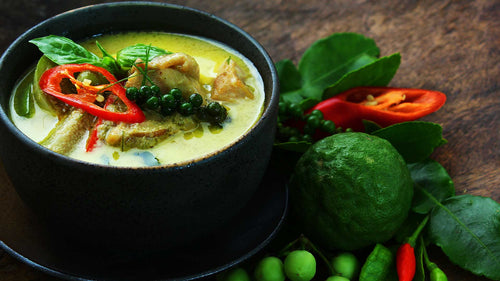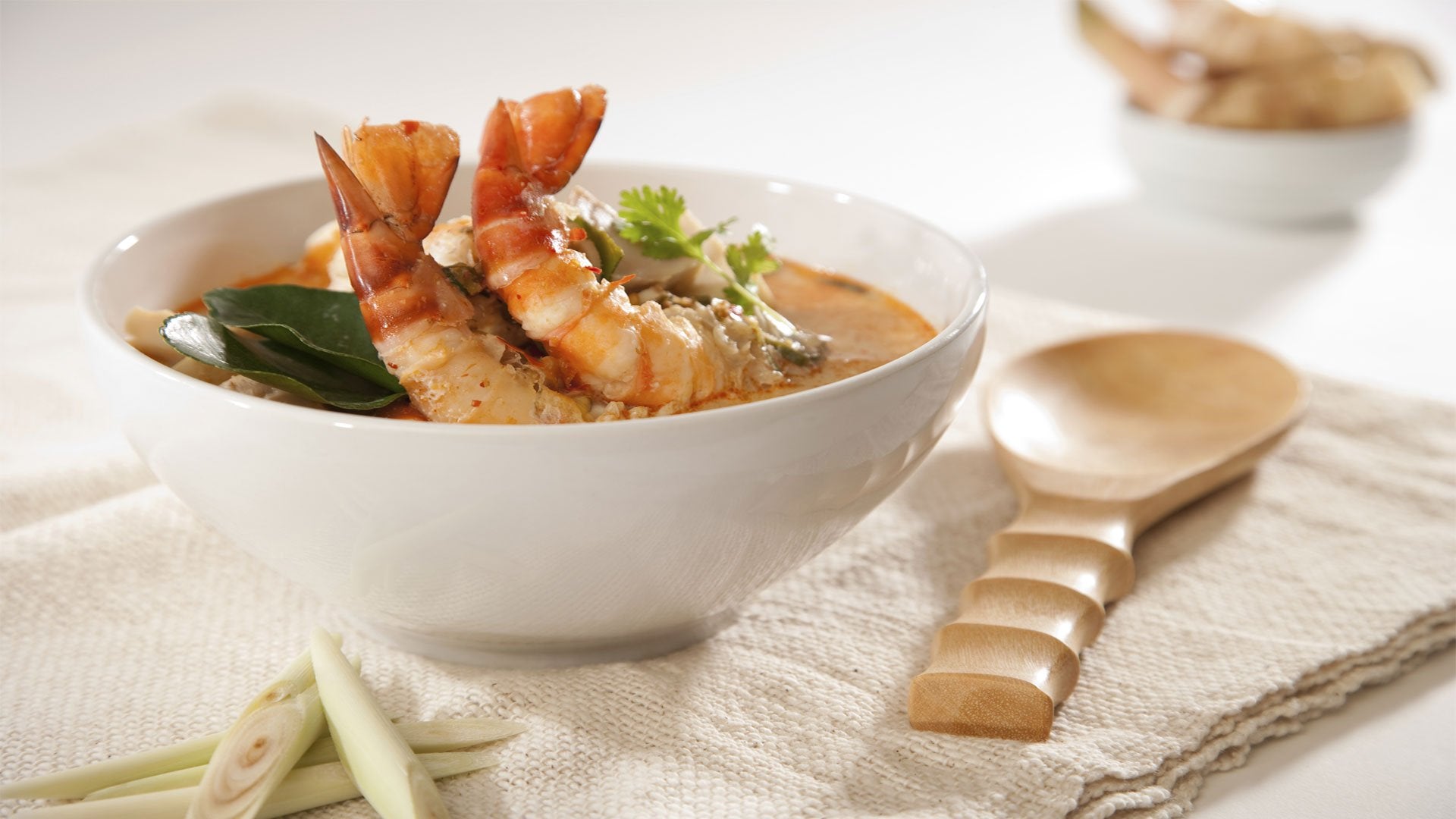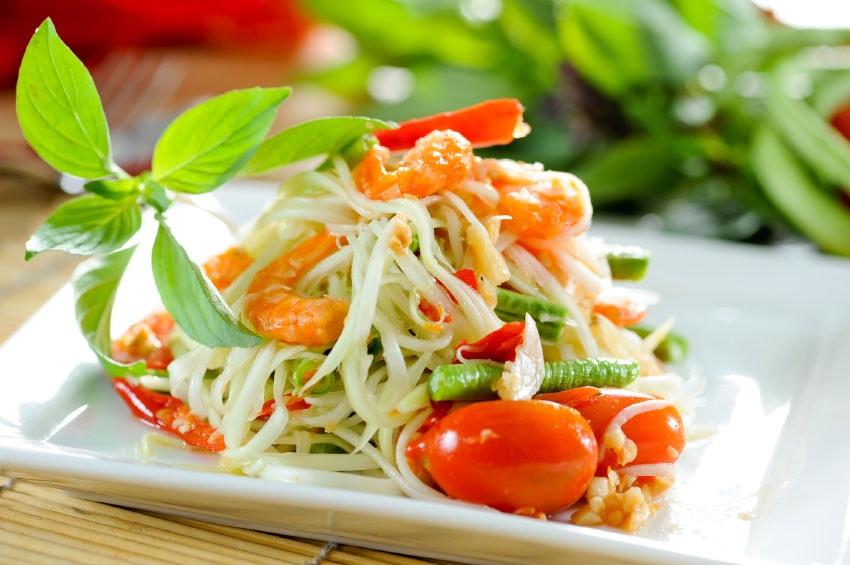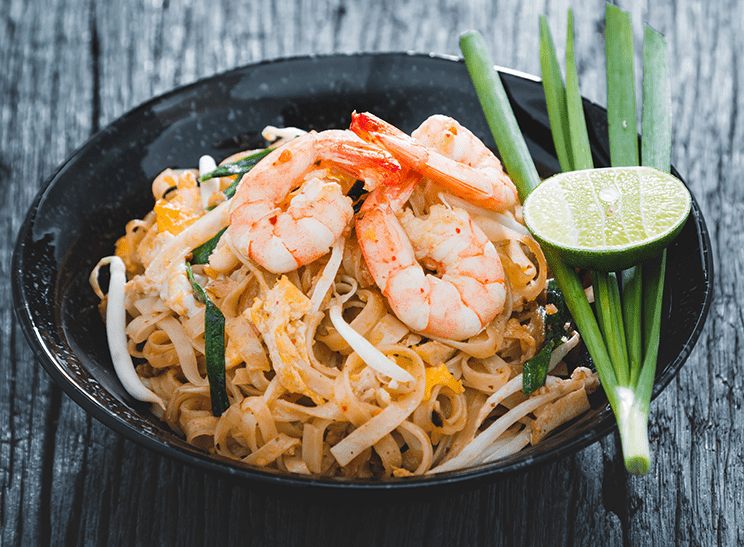While lemongrass is used widely across the world for a variety of cuisines, in the west, it is considered a specialty ingredient that mainly either budding cooks or professional chefs are familiar with using in personal or traditional recipes. Lemongrass in fact originates from specific regions of South and Southeast Asia including India, Burma and Thailand; where it is a more common ingredient stocked in households. But how did lemongrass become so popular in the west? This ingredient is not only well loved for its warm, zesty taste and aroma but also for its versatility in cooking applications. In this blog, we’re sharing a simple guide to cooking and using lemongrass.
What is Lemongrass?
Lemongrass is a Southeast Asian herb used in various cuisines across the world but notably in Thai and Vietnamese cuisine. Unlike other herbs which tend to be small, delicate and leafy, lemongrass is a tall sturdy stalk herb with several layers. Usually, the outer layers of lemongrass are removed to leave the fresher, inner layers for use in food and are also used to prepare herbal teas and other beverages. Lemongrass can come in a variety of forms from fresh to dried or powdered, however, in most Southeast Asian food recipes, lemongrass is used in its fresh form.
What does lemongrass taste like?
Despite its name, the lemongrass herb doesn’t simply taste like lemon. Its flavour has more depth and complexity than the lemon fruit and as such, you can’t use lemon to substitute the taste of lemongrass. So while lemongrass is well known for its citrusy flavour (a combination of lemon and lime), this is layered with other notes of ginger, mint and floral flavours. A key difference between lemongrass and other citrus flavoured ingredients is the absence of bitterness in taste. In fact, lemongrass arguably has a some-what mild flavour that can be built up and made more pungent by using larger quantities.
Cooking with lemongrass

Lemongrass is suitable for a range of food and cooking applications, adding an aromatic flavour to a variety of food, drink and even dessert recipes whether used cooked or raw. One of the best features of lemongrass is how it maintains its flavour when cooked for long periods of time, making it suitable for curries, stews and many other recipes. Below is a breakdown of how lemongrass is typically incorporated into cooking:
In Thai Cuisine:
In Thai cuisine, lemongrass is a great ingredient for improving the depth of flavour in recipes. Lemongrass is commonly used as an ingredient to prepare Thai cooking pastes for curries and other types of seasoning, as well as being chopped or sliced and added to soups, salad or stir fries. Yum Takrai (Thai lemongrass salad) is one of the obvious applications of this ingredient in Thai cuisine and it can also be found in other traditional Thai recipes such as Massaman Curry, Tom Yum Soup or home-made Thai sausages.
In general:
Lemongrass pairs well with so many other ingredients, be it Thai ingredients such as coconut milk, galangal, garlic and other aromatics or general ingredients of chicken, beef, pork and fish. As mentioned before, this herb is well suited to long cooking processes so works with soups, stews and curries but it can equally be used closer to the end of the cooking process to infuse flavour or alternatively in faster recipes such as stir fries to achieve the same effect.
Lemongrass is also loved for its versatility and this extends beyond savoury recipes. Lemongrass can also be used in cakes, cookies, other baked recipes and even ice cream with the right combination of ingredients and flavours to make a delicious taste.
How to Prepare Lemongrass:
Before culinary use, lemongrass needs to be prepared for cooking. The preparation will depend on the way and type of recipe being made. However, more often than not in Thai cuisine lemongrass will have the lower bulb removed, then peeled back to reveal freshed stalks and finely chopped. At this point, the lemongrass may be ready to use in recipes. After chopping, lemongrass can further be pounded or minced to prepare cooking pastes such as curry paste, marinades, infused into dressings and more!
Recipes Using Lemongrass:
Tom Yum Soup

Lemongrass is one of a few key ingredients in making Tom Yum, a flavourful Thai soup that is typically made with shrimp/prawns, a fragrant sour and spicy broth, red curry paste or tom yum paste. You will also typically find lemongrass as an ingredient in many pre-made tom yum pastes for convenience cooking.
Massaman Curry

Massaman curry is another Thai recipe which uses the lemongrass herb. The mild but flavoursome taste of lemongrass fits perfectly into the hearty, spicy, sweet and sour, coconut-based curry, adding depth of flavour without overtaking the whole taste.
Thai Sausage (Saigrog)

Home-made Thai sausage (saigrog) is made with a variety of Thai herbs and spices and of course, lemongrass is one of the key herbs used to add flavour. In this recipe, the lemongrass compliments the pork, garlic, ginger, chillies, fish sauce and other ingredients in creating a distinctly Thai taste to a standard method of preparing sausages.













Leave a comment